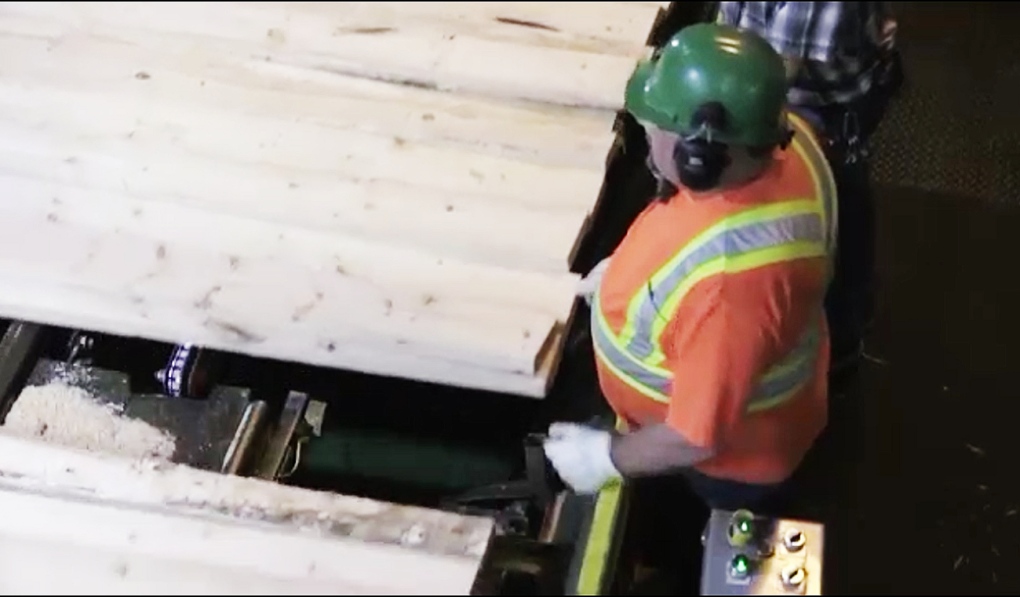Groups release results of research into workplace diseases
Major northern industries such as mining and forestry are critical for the economy, but they can also put workers at risk for disease.
Workplace Safety North and the Occupational Cancer Research Centre have released findings of the top workplace diseases and injuries for key industries in our region.
The Occupational Cancer Research Centre found that blue-collar industries are paying more strict attention to worker health than in decades past, but they’re still not without risk.
“These are important industries for our economy and for supporting northern communities, but they are hazardous industries,” said Paul Demers of the Occupational Cancer Research Centre.
Partnering with Workplace Safety North, they compiled decades of provincial health data and narrowed down the highest-risk workplace injuries and illnesses in three sectors.
The data shows miners are more likely to develop silicosis, idiopathic pulmonary fibrosis, leukemia and non-Hodgkin’s lymphoma, among other diseases.
 Major northern industries such as mining and forestry are critical for the economy, but they can also put workers at risk for disease. (File)
Major northern industries such as mining and forestry are critical for the economy, but they can also put workers at risk for disease. (File)
As well, asthma and oral cancer are among the most prevalent illnesses among forestry workers. In the pulp and paper industry, asbestos exposure is especially prevalent.
All three sectors share common health risks, including chronic obstructive pulmonary disease, carpal tunnel, reduced blood flow, heart attacks and hearing loss, along with various forms of cancer.
Safety measures have advanced, Demers said, but many risks have yet to be dealt with.
“It’s something that’s going to be a long-term challenge, to make sure that levels of carcinogens in the air are kept low, that people use respiratory protection, when necessary, that people report problems when they see them,” he said.
ELETRIC VEHICLES WILL HELP
Mining sector officials said electrification will eliminate diesel fumes and equipment suppliers are working on new technologies.
“Different types of sensors, that will sense different particles in the air or different gases that may be a cause of some of the illnesses that we’re seeing,” said Marla Tremblay of Mine Connect.
Tremblay said solving these issues are top priority.
“Not just because there’s a labour crunch … but everybody knows that their workers have families, they want them to be safe,” she said.
Demers said the goal is to both push for solutions and remind workers to protect themselves.
- Download our app to get local alerts on your device
- Get the latest local updates right to your inbox
“To be alert for signs that they may be developing disease because early diagnosis is also important,” he said.
Demers’ agency is helping develop a provincial registry to better track harmful workplace exposures, diagnose illnesses and compensate workers.
CTVNews.ca Top Stories

Serial sexual offender linked to unsolved 1970s homicides of four Calgary girls, women
An investigation into unsolved historical homicides from the 1970s has linked the deaths of two girls and two young women in and around Calgary to a now-deceased serial offender.
Woman with liver failure rejected for a transplant after medical review highlights alcohol use
For nearly three months, Amanda Huska has been in an Ontario hospital, part of it on life support, because of severe liver failure. Her history of alcohol use is getting in the way of her only potential treatment: a liver transplant.
$500K-worth of elvers seized at Toronto airport
Fishery and border service officers seized more than 100 kilograms of unauthorized elvers at the Toronto Pearson International Airport on Wednesday.
Toronto eliminated from PWHL playoffs
Toronto has been eliminated from the PWHL playoffs.
Information commissioner faces $700K funding shortfall, says system is 'overwhelmed'
Canada's information commissioner says her office is facing a $700,000 funding shortfall that could impact its ability to investigate complaints about government transparency and accountability.
B.C. man 'attacked suddenly' by adult grizzly near Alberta boundary: RCMP
A B.C. man is recovering from multiple injuries after he was "attacked suddenly" by an adult grizzly bear near Elkford Thursday afternoon.
Backlash over NFL player Harrison Butker's commencement speech has reached a new level
The NFL is distancing itself from controversial comments by Kansas City Chiefs kicker Harrison Butker during a recent commencement address.
Dabney Coleman, actor who specialized in curmudgeons, dies at 92
Dabney Coleman, the mustachioed character actor who specialized in smarmy villains like the chauvinist boss in '9 to 5' and the nasty TV director in 'Tootsie,' has died. He was 92.
Craig Berube named as next head coach of Toronto Maple Leafs
The Toronto Maple Leafs have named Craig Berube as their new head coach.

































